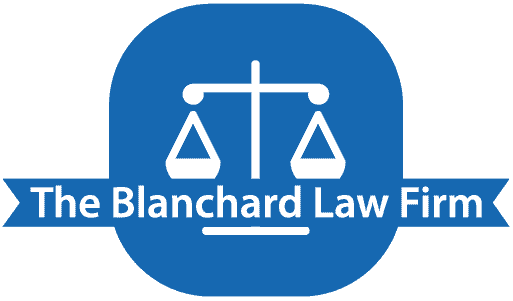
26 Aug Integrating Estate Planning with Your Business Succession Strategy
Succession planning and estate planning are often treated as two separate boxes to check – one focused on the business and the other on personal legacy. In reality, they’re deeply connected.
For business owners, especially those running closely-held enterprises, failing to coordinate estate planning with business succession strategy can create tax inefficiencies, leadership gaps, family conflict, and even jeopardize the business itself.
At The Blanchard Law Firm, we guide business owners through an integrated approach that aligns personal wishes, family needs, and the long-term viability of the enterprise.
In this blog post, we outline the essential steps and considerations to merge estate planning with business succession so your legacy, both personal and professional, is preserved and protected.
Why Integration Matters
A business is often a family’s single largest asset. Without a coordinated plan, the death, incapacity, or retirement of an owner can trigger unintended consequences: forced sales, estate tax burdens, creditor exposure, or leadership disputes.
Integrating estate and succession planning ensures decisions made in one arena support outcomes in the other. The goals are simple but powerful: maintain continuity of operations, preserve value, satisfy family and stakeholder expectations, and minimize taxes and legal friction.
Start with a Full Inventory: Personal and Business Assets
Begin by creating a comprehensive inventory of assets. This means more than listing accounts and property – you must document ownership percentages, contracts, intellectual property, key employee agreements, outstanding loans, and contingent liabilities. For the business side, include:
- Ownership structure (LLC, S-corp, C-corp, partnership) and operating/corporate agreements
- Valuation or appraisal history and methods used
- Key contracts (leases, supplier/customer, buy-sell agreements)
- Employee stock ownership plans, equity incentive plans, and retirement plans
On the personal side, include trusts, life insurance, investment accounts, real estate, and any intermingling of assets (e.g., family member loans to the business). This inventory becomes the foundation for tailored estate and succession solutions.

Define Clear Objectives for Both Family and Business
Discuss and document your objectives. Typical goals include:
- Keeping the business in family hands
- Selling the business to key managers or third parties at fair market value
- Transitioning ownership gradually while retaining income streams
- Providing for non-involved heirs fairly
- Minimizing estate and transfer taxes
Articulate these priorities early. They drive the choice of legal structures, the use of trusts, insurance strategies, and the design of buy-sell agreements.
When priorities conflict – for example, a desire to keep ownership in the family vs. the need to compensate non-owner heirs – an integrated plan balances interests through payments, trusts, or phased ownership transfers.
Choose the Right Succession Structure
The legal and tax structure of your business influences succession options. Common approaches include:
- Transfer to family members (gifts, sales, or a mix): may use valuation discounts, family limited partnerships, or grants to reduce tax burdens.
- Management buyout (MBO): management purchases the owner’s interest via financing or seller note.
- Sale to a third party with the proceeds distributed according to estate plan.
- Employee ownership through ESOPs or employee stock purchase plans can provide liquidity and preserve continuity.
Each approach has estate implications – gifting impacts estate tax calculations, buyouts require funding and liquidity planning, and ESOPs require corporate-level changes. Working with legal, tax, and valuation professionals ensures chosen structures achieve both succession and estate goals.
Coordinate Buy-Sell Agreements with Estate Documents
A properly funded buy-sell agreement is central to a smooth ownership transition. It dictates who may buy an owner’s interest, the price, and the funding mechanisms for the purchase.
When coordinated with your will and trusts, a buy-sell prevents heirs from inheriting illiquid business interests they cannot manage or sell. Key funding mechanisms include:
- Life insurance (to provide liquidity to buy out deceased owner’s shares)
- Installment payments or seller financing
- A dedicated reserve or sinking fund
Make sure the buy-sell’s triggering events, valuation method, and funding align with estate documents. Otherwise, the estate may receive an interest instead of cash, forcing a sale or creating operational disruption.
Use Trusts to Control Ownership and Provide Liquidity
Trusts are one of the most flexible tools to balance family and business interests. They allow you to:
- Transfer ownership gradually while retaining control via trustee provisions
- Provide income streams to beneficiaries without transferring operational control
- Protect business interests from creditors or divorcing spouses
- Defer or reduce estate taxes through advanced strategies (e.g., GRATs, SLATs, dynasty trusts – subject to tax law and professional advice)
For owners who want to keep management in capable hands while providing for non-active family members, trusts can allocate economic benefits differently from control rights.
Protect Against Incapacity with Durable Powers and Governance
Succession planning is not only about death; incapacity can be equally disruptive. Durable financial and healthcare powers of attorney, along with corporate governance documents that specify emergency decision-making, keep the business functional. Consider:
- Granting a trusted agent a durable POA for business banking and financial actions
- A corporate resolution or shareholder agreement that outlines temporary management authority
- Emergency succession protocols for top executives
These instruments minimize downtime and ensure that someone authorized can make urgent decisions.
Plan for Taxes and Creditor Exposure
Tax consequences are often the greatest threat to family wealth and business continuity. Estate taxes, capital gains taxes, and corporate-level taxes must be factored into the succession strategy. Techniques to consider:
- Lifetime gifting strategies combined with valuation discounts where appropriate
- Trust structures that remove assets from the taxable estate
- Insurance proceeds earmarked for estate taxes and buyouts
- Tax elections and entity restructuring before transfer (with professional advice)
Additionally, insulate the business and personal assets from creditor claims through proper entity separation, shareholder agreements, and trust protections.

Align Corporate Governance and Management Transition
Estate planning without operational transition planning is incomplete. Prepare the next generation of leadership:
- Create formal leadership development and mentoring plans for family or internal successors
- Document policies for compensation, roles, and decision-making authority
- Update corporate bylaws, operating agreements, and succession matrices to reflect planned transitions
Transparent governance documents reduce disputes and create a credible path for continuity that stakeholders – customers, lenders, employees – can rely upon.
Communicate the Plan Transparently (But Carefully)
Family dynamics complicate succession and estate planning. An open, honest conversation about goals and expectations prevents surprises later. Consider staged discussions:
- Share general objectives with family and key stakeholders.
- Discuss specific roles with proposed successors or managers.
- Provide clear written explanations for beneficiaries who won’t be involved in the business, explaining how they will be fairly compensated.
Work with advisors to facilitate family meetings to reduce emotion-driven decisions and preserve relationships.
Draft, Fund, and Review Core Documents
An integrated plan requires properly drafted and funded documents, including:
- Will(s) and testamentary documents
- Revocable and irrevocable trusts as appropriate
- Buy-sell agreements with funding plans
- Powers of attorney (financial and medical)
- Shareholder or operating agreements reflecting succession rules
- Key-person and buyout insurance policies
Equally important: schedule periodic reviews and updates. Laws, valuations, family circumstances, and business conditions change. Regularly revisit your integrated plan, at least every 2–5 years or following major life or business events.
Putting It All Together: A Practical Checklist
- Inventory business & personal assets and ownership interests.
- Define family and business succession goals.
- Select a succession structure (sale, family transfer, ESOP, MBO).
- Draft/fund buy-sell agreements tied to your estate documents.
- Create trusts to manage distribution and control.
- Set up durable powers of attorney and healthcare directives.
- Secure insurance to fund buyouts and estate taxes.
- Update corporate governance and operational succession plans.
- Communicate the plan to stakeholders.
- Review and update regularly.
Preserve the Business, Protect the Family
Integrating estate planning with your business succession strategy is the most effective way to protect both your enterprise and your loved ones. Thoughtfully designed legal documents, aligned tax planning, well-funded buyouts, and clear governance create a durable legacy that survives transitions.
If you’re a business owner ready to align your estate plan with a practical succession strategy, contact The Blanchard Law Firm. Our experienced team will help you craft a coordinated plan that preserves value, reduces risk, and provides clarity for the people and business you care about most.

Sorry, the comment form is closed at this time.